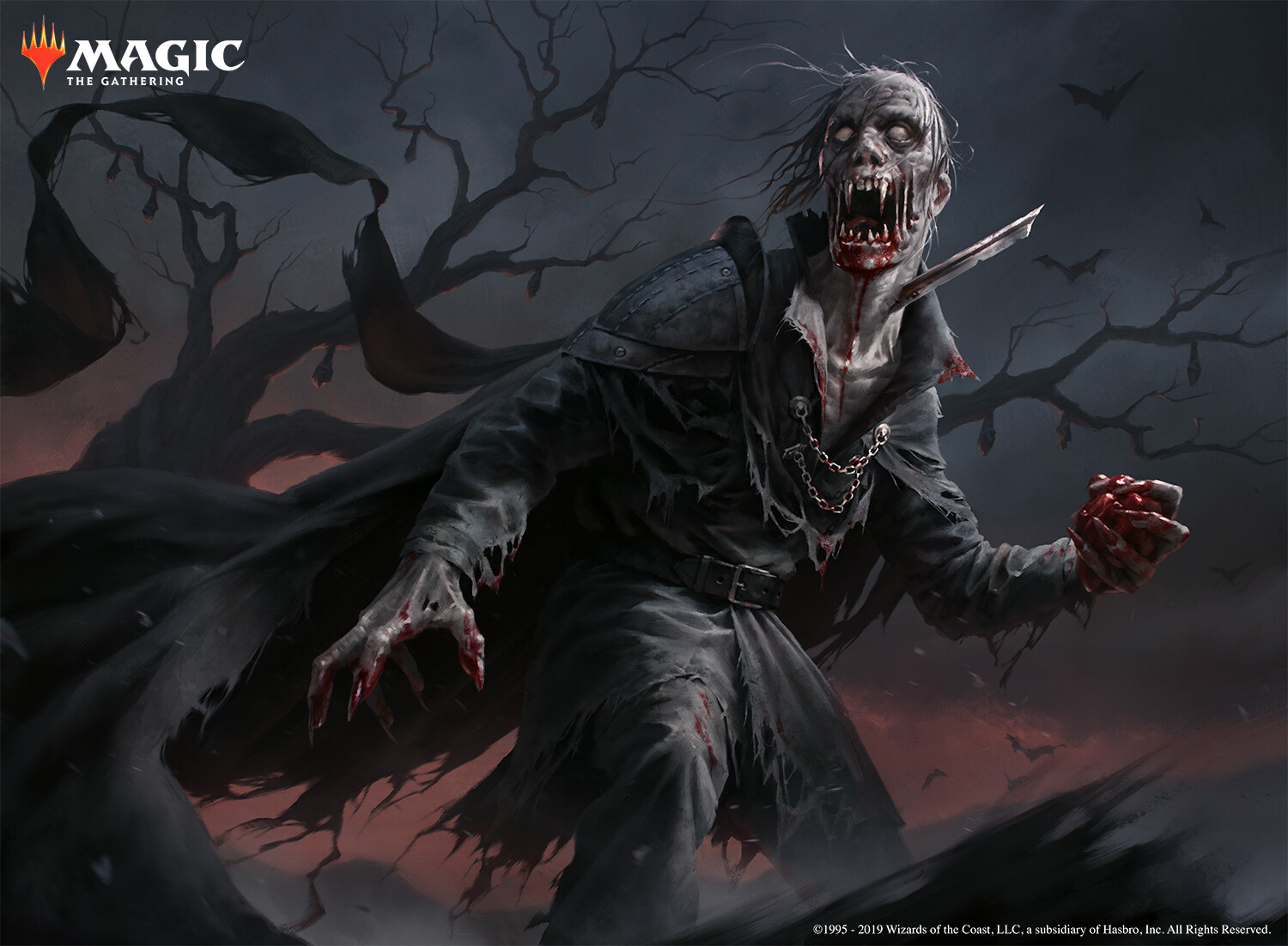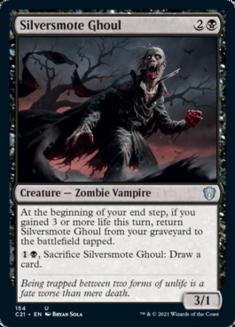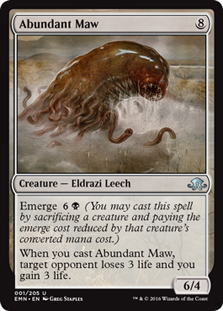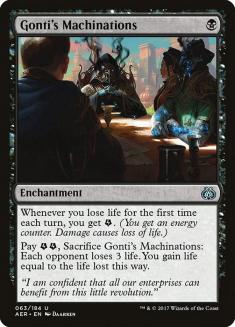Wow.
I can’t say I was expecting to wake up to a surprise ban announcement, and certainly not one as extensive as yesterday’s. Both Standard and Pioneer have been completely changed and it’s going to take weeks for new metagames to take shape. Typically August is one of the dullest months for Magic but this one is going to be anything but.
I’m of course excited to get working on Pioneer, since I love the format and am excited for it to receive a second life with the removal of Inverter of Truth; Underworld Breach; Walking Ballista; and Kethis, the Hidden Hand. I don’t know if such a drastic, scorched-earth policy was necessary, but it’s been clear for a while now that interest in the format was near zero, so I can see why they felt the need to make a major change to the format.
With the exception of Uro, Titan of Nature’s Wrath, all of the dominant decks enabled by Theros Beyond Death have been neutered, which will undoubtedly leave the metagame looking much fairer. That shift is exactly what Sultai Dredge needs to return as a force in Pioneer.
Sultai Dredge, which I had success with prior to Theros Beyond Death, was well-positioned against a field of Azorius Control, Mono-Red Midrange, and various aggro strategies because it plays to the battlefield but is resilient to traditional interaction like removal, counterspells, and discard. It has various methods to go over the top of other creature decks and break open stalled battlefields, and its best draws are more explosive than those of any deck that’s playing fair.
The problem comes when you play against matchups that can largely ignore your creatures. Maybe they have to block or use removal once or twice to stay alive, but you don’t have time to leverage the resilience of your threats before they assemble a game-winning combo. That’s what Pioneer became in February, so there wasn’t room for Sultai Dredge to thrive. But in a combo-less metagame, it’s a deck to watch.
A New Toy
Of course, it’s been quite a while since Sultai Dredge was a major player, and that means we have to look over the cards that have been released for potential additions. And for anyone who plays Modern Dredge, there’s a clear card to consider here:
Silversmote Ghoul has become a staple in Modern Dredge, supplanting prior staple Bloodghast with the minor addition of Smiting Helix as a secondary enabler after Creeping Chill. Ghoul introduces some extra variance if you hit your Chills before it, but it creates much more explosive draws for the deck and has proven to be worthwhile in Modern.
In Pioneer, you don’t have any enabler as powerful as Cathartic Reunion, which makes it more likely that your Ghouls will be stranded in the graveyard. That said, Scrapheap Scrounger was the worst card in the deck as the last graveyard payoff, in large part because you didn’t have time to pay two mana for such a minor effect. At the very least, Silversmote Ghoul represents a better last payoff that you don’t go too far out of your way to enable but offers the potential to raise the ceiling of your draws.
You’re still going to want a second way of enabling the Ghoul, and the clear choice is Uro, Titan of Nature’s Wrath. You can hit Uro with your enablers, casting it naturally on Turn 3 after an enabler or two can fill the battlefield on its own, and it provides a threat with a high individual power level that can win a game even if your other synergies are contained. In particular, Uro gives you a way to stabilize against aggressive decks and trump players who want to sideboard in a pile of Anger of the Gods to cleanly answer your cheaper threats.
Silversmote Ghoul is also going to change the way you play the deck. Since it only triggers on your end step, you want to avoid triggering Creeping Chill on your opponent’s turn. Normally you’d cast Grisly Salvage on your opponent’s declare attackers step or at the end of their second main phase to deny them the information of what you hit, but now you should be operating at sorcery speed. This is mostly a minor change, but it does make any potential counterspells in the sideboard worse, since it’s harder to hold up mana for them.
With those additions in mind, here’s the first list of the deck I built:
Creatures (28)
- 4 Narcomoeba
- 4 Satyr Wayfinder
- 4 Prized Amalgam
- 2 Decimator of the Provinces
- 4 Haunted Dead
- 4 Stitcher's Supplier
- 3 Uro, Titan of Nature's Wrath
- 3 Silversmote Ghoul
Lands (20)
Spells (12)
Sideboard

From the previous iteration, Uro essentially takes the place of Gurmag Angler and Silversmote Ghoul the place of Scrapheap Scrounger. The power level is certainly higher, but losing out on Gurmag Angler comes at a cost. Angler was the easiest creature to sacrifice to Decimator of the Provinces, and a second one-drop to allow for a double-spell on Turn 3. Uro isn’t as explosive by itself, but it makes the deck more resilient because of the card advantage it provides, offers additional lifegain against aggressive decks, and is yet another creature that can trigger Prized Amalgam.
Moreover, casting it from hand lets you use all your mana on Turn 3 and accelerate into the extra mana necessary for Decimator of the Provinces, so on the balance I like Uro more once you have Silversmote Ghoul to enable.
The more significant downside of Uro is how much it stretches your mana. Previously the deck was Golgari, playing a few blue lands in order to cast Narcomoeba and Prized Amalgam when necessary while also opening up your sideboard options. Uro not only requires access to early blue for the front half, but double-blue for the escape cost. You have Satyr Wayfinder and Grisly Salvage to help dig for appropriate lands, but this manabase is significantly more painful than previous iterations, and there will be some games where you can’t escape your Uro.
But the frustration from those games is going to be worth it. Modern Dredge made a similar sacrifice in consistency, trimming enablers and dredges to the bare-bones numbers in order to make room for Smiting Helix. With seven three-power creatures to recur, it’s easy to generate double-digit power by Turn 3 or 4 while creating a huge life swing without even attacking. That explosive capability makes this deck difficult to race, while the nature of the threats makes it hard to pull ahead with typical interactive spells.
Sideboards are notoriously tough in the early days of a format, which is where we are with Pioneer right now, but Thoughtseize is an easy go to for any remaining decks that do go over the top of you, while Fatal Push is the premier removal spell against aggressive decks. Driven // Despair is a great graveyard payoff against control and combo decks that is fine to draw and cast naturally.
Reclamation Sage and Assassin’s Trophy are my choices for anti-hate cards. Trophy is simply the most versatile answer there is, while Reclamation Sage gets points for being an answer to Rest in Peace and Leyline of the Void that you can find off Gather the Pack and Grisly Salvage. Lastly we have Soul-Guide Lantern, which is my attempt to both gain an edge in the mirror and target opposing Uros, which is powerful enough to take over a game against recursive threats.
Maximizing Silversmote Ghoul
The previous list is trying to incorporate Silversmote Ghoul as a secondary payoff, keeping the old core of the deck as intact as possible while still properly enabling the new toy. But with the power of Silversmote Ghoul shown in Modern, it’s possible that we should be building around it as a primary payoff instead, working from the ground up and looking for the best, most explosive enablers for the newest graveyard payoff.
There are two enablers for Silversmote Ghoul that I think are worth exploring: Abundant Maw and Gonti’s Machinations.
Recursive threats play nicely with emerge, and Abundant Maw is no exception. At only seven mana it can easily be cast by sacrificing Prized Amalgam, Haunted Dead, or even Silversmote Ghoul itself. It’s also very helpful to have another way to recur Ghoul that you can dig for with Grisly Salvage or Gather the Pack. This makes it much easier to recur Silversmote Ghouls turn after turn. It’s fighting for space with Decimator of the Provinces, so a list with Abundant Maw will need another plan for beating stalled battlefields, but that’s an easy obstacle to clear.
This one asks a lot more of you, but at one mana it’s a nice cheap play that isn’t going to interrupt your curve very often and sets you up to recur Silversmote Ghoul as early as Turn 2 even without a Creeping Chill. The interesting part of the card is how it incentivizes you to dip further into energy.
With an energy sub-theme, you gain access to two other cards that are quite attractive: Minister of Inquiries and Aether Hub. Minster is another one-mana enabler, and the games where you start with an enabler on Turn 1 are much easier than those where you don’t. It also provides a sink to use any extra energy you gain with Gonti’s Machinations before sacrificing it. Minister can mill twelve or fifteen cards in a game where it goes unanswered, letting you get much deeper into your deck and creating giant battlefields.
Aether Hub is a great mana fixer for a deck whose mana, while no longer stretched by Uro, is now stretched by adding a blue one-drop to a nearly Golgari deck. Sometimes your draw will be awkward and Hub will suck away energy you want for other purposes, but on the balance it’s a significant benefit.
Exploring the energy theme, I came to the following list:
Creatures (30)
- 4 Narcomoeba
- 4 Satyr Wayfinder
- 4 Prized Amalgam
- 3 Haunted Dead
- 3 Abundant Maw
- 4 Minister of Inquiries
- 4 Stitcher's Supplier
- 4 Silversmote Ghoul
Lands (19)
Spells (11)
Sideboard

The big question here is how to replace the role of Decimator of the Provinces winning through a stalled battlefield, and the answer conveniently comes from the combination of Gonti’s Machinations and Abundant Maw. Between those cards and Creeping Chill, this deck has ten Lightning Helixes in it, most of which are invulnerable to counterspells. So rather than work towards a combo kill, this deck is happy to sit around, maybe pecking in for damage in the air with a stray Narcomoeba or Spirit token, knowing that eventually it can finish the opponent off outside of combat.
That said, you should look to be more aggressive in the early-game so as to get your opponent within reasonable burn range. Chump attacking a creature or two will be worth an extra three damage much of the time, especially if you have a Minster to funnel energy into or some graveyard enablers left over in your hand.
The burn plan makes this list more vulnerable to opposing lifegain, notably Uro, so I’ve added a third copy of Soul-Guide Lantern to the sideboard over a Thoughtseize.
An Eye to the Future
Pioneer will see a ton of play from the community over the coming weeks, so its current unpredictable state won’t remain for very long. The bans are clearly pushing the format in a very fair direction, but there’s plenty of space left over to play powerful, synergy-driven decks that can combine to do something way more powerful than any collection of efficient creatures and good disruption can achieve.
We may not have two-card combos that end the game on the spot, but you should still seek the strategies that feel unfair. After all, this format isn’t even a year old yet. I know that doesn’t sound right, but it is. 2020 hasn’t actually been three years long. There’s plenty of space to explore decks that were being held down by the oppressive combo decks, new cards that haven’t had a chance to shine yet, and synergies that haven’t even been discovered yet.
This is going to be the most fun Pioneer has been since it was Magic’s darling last November. For people who want to play fair strategies, they have the opportunity to do so now, but for those of us who strive for more, there are plenty of powerful synergies left to exploit in Pioneer. And if the metagame isn’t taking them seriously, a lot of players are in for a rude awakening.





